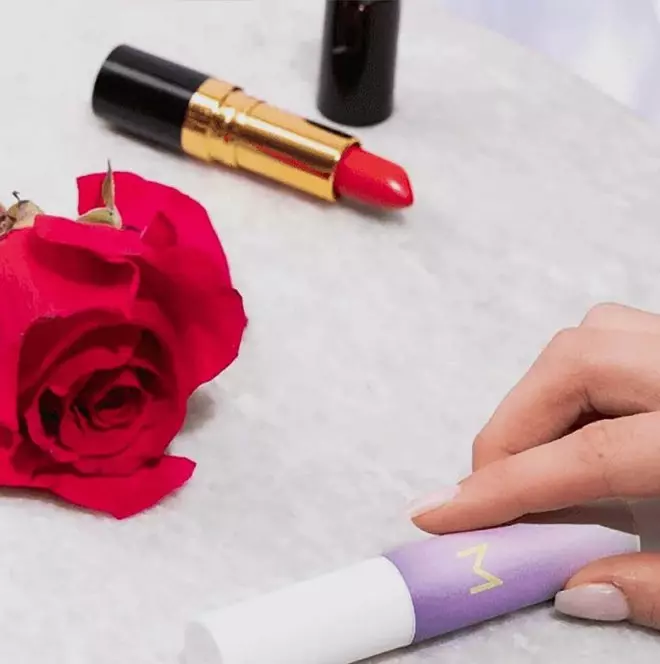
Sex is supposed to be fun, and women have every right to have satisfying sex with their romantic partners, right? But as we age, and enter menopause, sometimes we just aren’t feeling it or maybe sex is painful. We hear from many women that they are just ‘putting up with sex’ rather than looking forward to it because they didn’t feel like participating, or it often hurts. Is there a viagra for women type of solution? Because while taking Viagra may be great for a man, what about their female partner who maybe hasn’t had penetrative sex in years? For women, male Viagra may not always be seen as a positive. Men can take Viagra to solve a simple "mechanical" problem, but for their female partners, the drug's effects – on everything from their self-esteem to their sense of security – are far more complex and are transforming how women feel about sex and relationships. At about the time men may be feeling the need for ED medications, their female partners are typically in perimenopause or menopause and that’s when hormone levels estrogen, progesterone, and testosterone drop. With the drop in these hormones, women can start to develop what is called the Genitourinary Syndrome of Menopause (GSM). These hormone deficiencies create a wide array of symptoms that impact a woman’s genitourinary tract, including the vagina, labia, urethra, and bladder. One symptom of the decreased hormones is Vaginal and Vulvar Atrophy which can make sex painful (dyspareunia). Other symptoms of VVA are vaginal drying, burning, painful urination, and narrowing of the vagina which can add to the pain felt during sexual penetration. In contrast to other menopause symptoms, like hot flashes which usually improve over time, GSM and VVA get worse when not treated and women can suffer chronically. Regardless of the degree of VVA, women can get treatment and enjoy pain-free sex life. This article will walk you through the many options for treating GSM and VVA and ways to get you back to wanting and enjoying sex again.
The Advent of Sexuopharmaceuticals
The best-known sexuopharmaceutical is Viagra, a medication focused on enabling (and enhancing) sexual intercourse for men. Viagra (plus Cialis or Levitra) includes the chemical sildenafil citrate which increases the blood flow to the penis so a man can enjoy a harder, longer-lasting, erect penis. In general, Viagra wears off within 2-3 hours of taking it. Viagra was initially released and approved by the FDA in 1998 - but advertisers weren’t allowed to say ‘erection’ in their advertising. Instead, the first ads were very serious, with a 75-year-old ex-presidential candidate (Bob Dole) suggesting it was time to, “Get Back to Mischief.” The FDA asked the manufacturer to pull some ads because they were too suggestive. Erectile dysfunction (ED) conversations and ads have surely come a long way.
What’s the Downside of Erectile Pills?
Age used to lower libido for both men and women, but with Viagra, men often feel like they can turn back the years. Women have not been so lucky. With vaginal changes due to decreased hormones, women often cannot, or do not want to keep up with their partner's new libido.
Viagra isn't a miracle cure; it deals with the mechanics of how a man engages in sex but does not deal with emotions. Viagra doesn't solve a troubled relationship or create a desire that just isn't there. Sadly, relationships can be broken by this new sexual dynamic, and the expectations surrounding sex often change.1
This change can potentially be incredibly harmful to a relationship, especially when the man is suddenly able to perform and wants sex again, but his female partner isn’t prepared. After all, when the man arrives with a cure to his ED this can be a major change since the average couple seeking help for erectile difficulties have not engaged in penile-vaginal sex for 2–5 years!
How Do We Help Women?
For many menopausal women, penetrative sex, even with lubrication, is painful. Because women’s levels of testosterone, progesterone, and estrogen drop off with age, their vaginal skin becomes drier and thinner. With sex, women may experience lower pelvic pain, irritation, and tearing of the vaginal wall. A suddenly revved-up intimate partner, who has longer-lasting desires, can cause pain and abrasion, even "honeymoon cystitis".
Despite the high prevalence of Genitourinary Syndrome of Menopause (GSM) and lack of improvement, if treatment isn’t provided, only a minority of affected women seek help or are offered treatment by their healthcare providers. In a survey of nearly 2,000 US postmenopausal women with GSM, 50% had never used any therapy for this problem.2
The reluctance of women and healthcare providers to talk about GSM contributes to limited assessment and treatment. This is unfortunate. GSM often has significant adverse effects on a woman’s sexual health and quality of life. This is true for women who are not sexually active but also experience bothersome symptoms of GSM. In another US survey of over 3,000 postmenopausal women, they reported that their vaginal discomfort had:3,4
Negatively affected their lives (80%),
Made them feel old (36%),
Negatively affected sleep (29%),
Lowered their self-esteem (26%),
Adversely affected sexual intimacy (led to the loss of intimacy for 85%),
Caused them to be less sexual (68%),
Detracted from the enjoyment of sex (59%), and
Had negative consequences on marriage/relationship (47%).
Women should also investigate if maybe they are suffering from female sexual arousal disorder.
Personalized hormone treatments. For you.

What is Female Sexual Arousal Disorder?
Female sexual interest/arousal disorder (FSIAD) occurs when the woman’s body doesn’t respond to sexual stimulation, either mental or physical. Mental arousal can be fantasies, a desire for sex, and excitement, while physical arousal could include swelling, tingling, or throbbing in the genital area, or vaginal wetness, or both.5
The term ‘sexual arousal disorder’ is used when discussing the diagnosis of women, but for men, we typically refer to it as erectile dysfunction (ED). Very few people have heard of FSIAD, but it is common and while it is frustrating, it is fully treatable. FSIAD is more common in women over the age of 45 when their hormone levels drop in perimenopause and menopause. Symptoms of FSIAD include:
Less initiation of sexual activity and unreceptive to a partner’s attempts to initiate sex.
Decreased sexual arousal or pleasure during sexual activity.
Less or no sensations in the genitals, and erogenous zones.
Pain during intercourse.
Inability to orgasm.
Reduced vaginal dilation, wetness/lubrication, and decreased genital swelling.
Most likely causes for the FSIAD:6
Decreased hormones specifically, estrogen, progesterone, and testosterone.
Psychological and emotional concerns (depression, stress; relationship problems).
Reduced blood flow to the genital area.
Vaginal infections can lead to sexual arousal problems.
Drug use - legal and not legal.
Available Solutions and Treatment Options
It would be great to have a single solution for women’s lowered libido and painful sex - but a woman’s anatomy is much more complex than a man’s. The good news is that menopausal women can resolve many genitourinary symptoms, improve sexual health and their quality of life by appropriately treating GSM. The choice of therapy depends on the severity of symptoms, the effectiveness and safety of treatments based on medical history, and patient preferences.
For women, there is an element of “use it or lose it” with Vulvovaginal Atrophy (VVA). Women who have not been sexually active for years are often surprised when sex is painful. So, staying active and keeping the vagina healthy is critical to sexual health. Prescription therapies like vaginal lubricants and moisturizers, vaginal estrogens and dehydroepiandrosterone (DHEA), and hormone replacement therapy (HRT) are fast, safe, and effective treatments. Because of the complexity of a woman’s anatomy, they may need a combination of treatments. Treatment may include hormone replacement therapy, lubricants, and their own type of ‘Viagra’ so their libido is increased and their vaginas are prepared to enjoy sex once again. Winona offers a variety of medications that can help with libido and enhance sex so it’s better than ever.
The FDA has approved prescription medications often referred to as “female Viagra.” But they work very differently from men’s Viagra. For men, Viagra treats ED by increasing blood flow to the penis to have an erection that’s firm enough to have sex. These men often still have sexual desire, but they just can’t get their bodies to respond physically when they want to have sex.
Sexual enhancement prescription medications can help women to regain and satisfy their sexual appetites and have heightened sexual experiences. Winona has a cream called, “Blossom” which is a woman’s Viagra. It contains Sildenafil which is the same ingredient in Viagra, but it is applied topically instead of as a pill.
The Blossom medication is applied directly to the clitoris to increase blood flow and wetness to a woman’s vaginal area so they can enjoy sex again. Finally, there are products for women that can help them get back to having a happy, fulfilling, pain-free sexual life. Conclusion
The advent of ED male Viagra affects more than a man's erection. It affects everything in between menopause and relationships that he and his partner share; the frequency with which they have sex, the practices that are included in sex, and potentially both partners’ perceptions of their own sexuality.
We can’t assume that female partners will welcome the changes brought about by men’s ED medications, especially when they are experiencing significant vaginal changes due to aging and menopause. Many factors may contribute to sexual troubles so women may benefit from trying several treatment approaches. Options include hormone replacement therapy, lubricants, vasodilators (Blossom Viagra for women), and working with your doctor to adjust other medications. Check out Winona today to learn more about HRT and vasodilators.
“This article is for informational purposes only and does not constitute medical advice. The information contained herein is not a substitute for professional medical advice. Always talk to your doctor about the risks and benefits of any treatment.”
Personalized hormone treatments. For you.

References:



